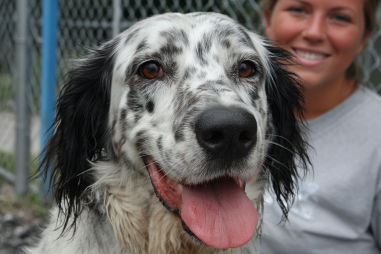Keeping your English Setter’s coat in top condition requires more than just a quick brush here and there. These elegant dogs are known for their beautiful, feathered coats that not only add to their charm but also need proper and regular care to stay healthy and tangle-free. Whether you’re a new English Setter owner or simply looking to fine-tune your grooming techniques, this guide will walk you through everything you need to know to keep your furry friend looking and feeling their best.
Introduction to English Setter Coat Types
English Setters have a distinctive and stunning coat that is both silky and feathered. Their fur is medium to long, with a soft texture that features feathering on the ears, chest, belly, legs, and tail. The coat is typically spotted or “belton” patterned, creating a captivating look unique to the breed.
One important thing to keep in mind is that their coat isn’t just for aesthetics; it provides protection against the elements when they’re out exploring or working. The hair is fine but dense, so it’s prone to tangling and matting if neglected. Understanding the characteristics of your English Setter’s coat will help in choosing the right grooming approach and products.
Tools Needed for Grooming
Having the right tools makes grooming your English Setter easier and more effective. Here’s a list of essential grooming tools every owner should have:
- Slicker Brush: Perfect for removing loose hair and preventing mats in the feathered areas.
- Pin Brush: Ideal for gently detangling and smoothing the longer coat.
- Comb: A wide-toothed comb helps to work through any knots, especially behind the ears and under the legs.
- Mat Splitter or Dematting Tool: Useful for breaking down stubborn mats without causing discomfort.
- Nail Clippers: A sturdy pair to keep the nails trimmed but not too short.
- Ear Cleaning Solution and Cotton Balls: To maintain ear hygiene and prevent infections.
- Dog Shampoo and Conditioner: Preferably formulated for sensitive skin, to keep the coat clean and shiny.
- Blow Dryer: A low-heat setting dryer can speed up drying after baths and help fluff the coat.
Step-by-Step Grooming Routine
Developing a consistent grooming routine will benefit your English Setter’s coat health and overall well-being. Here’s a detailed step-by-step guide to help you:
- Brushing: Begin by brushing your dog’s coat thoroughly using a slicker brush. Start with gentle strokes on the main body, then focus on the feathered areas where mats often develop, such as behind the ears, under the chest, and along the legs. Following up with a pin brush and comb will help detangle more sensitive spots.
- Checking for Mats and Tangles: Carefully examine the coat for any mats or tangles. Use a dematting tool or gently work through tough knots with your fingers and a comb. Never pull harshly, as this can hurt your dog’s skin.
- Bathing Preparation: Before bathing, ensure your dog is thoroughly brushed to remove loose hair and debris. This will prevent mats from tightening during the bath.
- Bathing: Use lukewarm water and apply a gentle dog shampoo, working into a lather focusing on areas prone to oiliness or dirt buildup. Rinse thoroughly to avoid residue. Applying a conditioner helps keep the coat soft and manageable.
- Drying: Gently towel dry to absorb excess water, then use a blow dryer on low heat while brushing to avoid tangles and fluff up the coat.
- Nail Clipping and Ear Cleaning: After the coat is dry, trim the nails carefully, avoiding the quick. Then, clean the ears with a vet-approved solution to prevent infections.
Managing Shedding and Matting
English Setters shed seasonally, typically heavier in spring and fall. Managing shedding effectively reduces loose fur around your home and maintains the dog’s comfort.
Regular brushing at least 3-4 times a week is key to controlling shedding. Brushing not only removes loose hairs but also stimulates natural oils in the coat that keep it healthy. For those particularly heavy shedding seasons, daily brushing might be necessary.
Mats are a common problem, especially in areas where the hair is longest or gets moist frequently. To prevent mats:
- Brush frequently with a slicker brush and comb.
- Keep feathered areas dry and clean.
- Check behind ears and under legs after walks or playtime outdoors.
Working out mats promptly is easier than waiting for them to harden. If mats are extensive or tight, it may be best to seek professional grooming assistance.
Bathing Frequency and Techniques
The English Setter’s coat does not require frequent baths, as over-bathing can strip essential oils, leading to dryness or irritation. Generally, bathing every 6 to 8 weeks is sufficient, with exceptions for particularly dirty or smelly dogs.
When bathing, choose a gentle shampoo formulated for dogs with sensitive skin to avoid dryness. Avoid human shampoos, which can disrupt the pH balance of your dog’s skin.
Rinse thoroughly to ensure no soap residue remains, as leftover shampoo can cause itching or flaking. Applying a moisturizing conditioner after shampooing can greatly improve coat texture and manageability.
After bath time, drying the coat completely is vital to prevent damp mats and skin irritation. Use a combination of towel drying and a blow dryer set to low or cool air while brushing to keep the coat fluffy and tangle-free.
Nail Clipping and Ear Care
Maintaining nail health is an important part of grooming your English Setter. Overgrown nails can cause discomfort, affect gait, and even lead to injuries. Check your dog’s nails every 2 to 3 weeks and trim as needed. Use clippers designed for dogs and be careful not to cut too close to the quick, which can be painful.
Ear care is equally vital since English Setters are prone to ear infections due to their floppy ears, which trap moisture and debris. Regularly inspect the ears for redness, odor, or excessive wax buildup.
Clean the ears weekly or as recommended by your vet, using a pet-safe ear cleaner. Apply the solution with cotton balls and gently wipe the inside of the ear flap and canal entrance. Never insert anything deep into the ear canal, as this can cause injury.
Seasonal Grooming Considerations
The time of year influences the grooming needs of your English Setter significantly. Here are a few tips to tailor your routine by season:
- Spring & Fall: These shedding seasons require more frequent brushing to manage the loose undercoat and prevent matting. You might also consider using an undercoat rake tool to help remove dead hair efficiently.
- Summer: A lighter grooming routine helps keep your dog cool. Trimming excessive feathering around the paws and belly can prevent overheating and reduce dirt and debris collection.
- Winter: Focus on maintaining coat health and moisture during colder months. Use coat conditioners and avoid bathing too frequently, which can dry out the skin. Check paws regularly for cracks or irritation caused by cold or salt on sidewalks.
Adjusting your grooming schedule and attention to coat condition through the seasons ensures your English Setter remains comfortable and looking their best year-round.
By understanding the specific needs of your English Setter’s beautiful coat and incorporating regular grooming practices, you’re not only enhancing their appearance but also contributing to their overall health and happiness. Remember, grooming time is also a wonderful opportunity to bond and monitor your dog’s skin and coat condition closely. With patience and the right tools, maintaining a healthy, feathered coat becomes an enjoyable routine for both you and your four-legged companion.







